Tag: All GI Exclusives
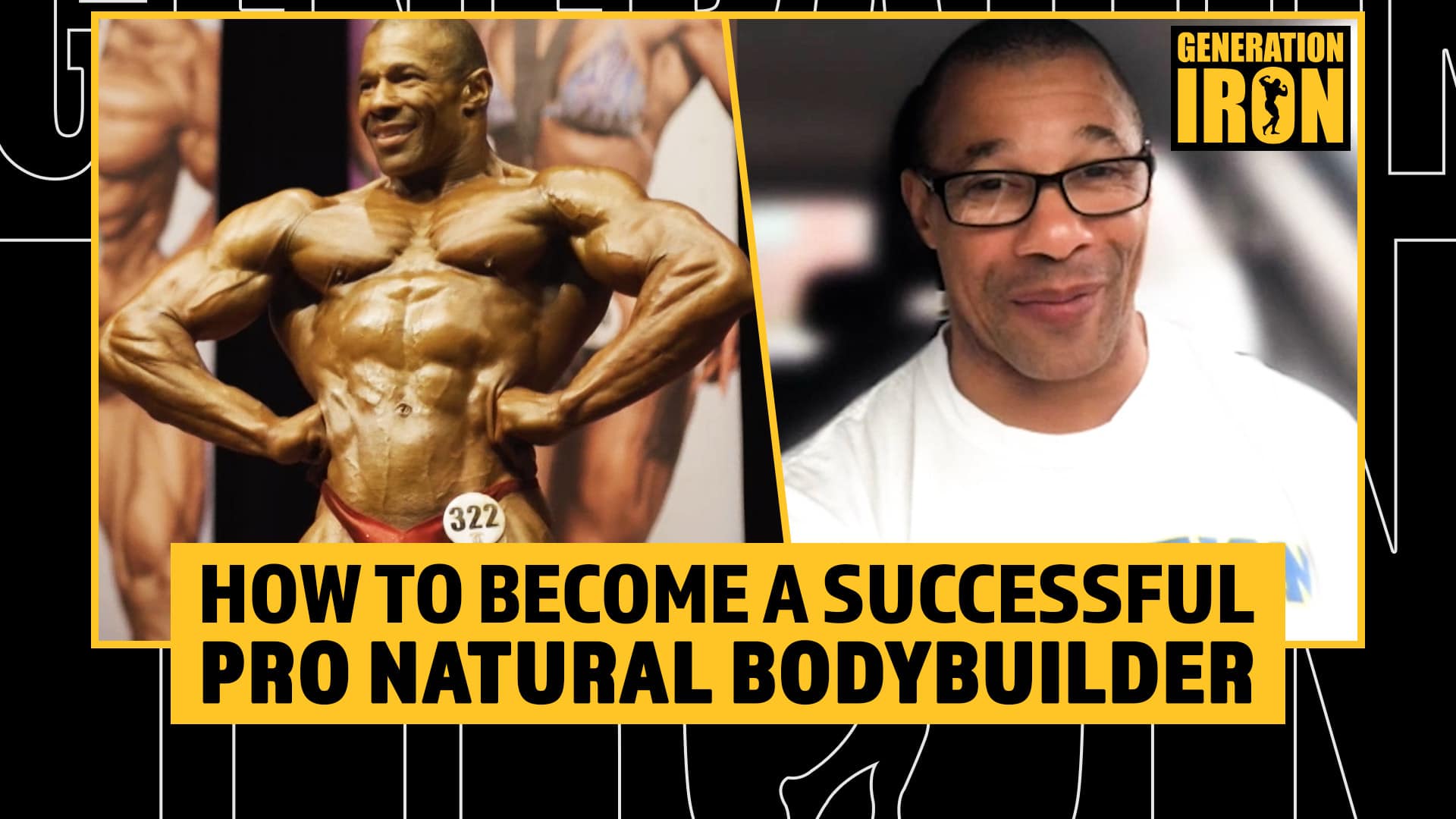
Philip Ricardo Jr: How To Become A Successful Pro Natural Bodybuilder
[embedded content]
Philip Ricardo Jr. discusses the INBA/PNBA and how bodybuilding lovers who do not want to use drugs can become successful as a pro natural bodybuilder.
Philip Ricardo Jr. has his own promoted INBA/PNBA natural bodybuilding competition coming up this month. The Pro/Am Philip Ricardo Legends International is set for April 30, 2022 and will be the first major event in the INBA/PNBA 2022 season. That’s why we decided to reconnect with Ricardo Jr. and discuss his upcoming show and other trending topic sin both natural and untested bodybuilding. In our latest GI Exclusive interview, Philip Ricardo Jr. goes into detail on how become a successful pro natural bodybuilder.
For many fans in the bodybuilding world, it’s seen that an actual bodybuilding career or success can only happen in the IFBB Pro league. That in order to become a successful bodybuilder, one will have to use PEDs such as steroids to become a bodybuilding superstar. But Philip Ricardo Jr. wants bodybuilding lovers to know that this isn’t true. The leading league in natural bodybuilding, INBA/PNBA, is taking strides to make pro natural bodybuilders super stars in their own right.
That’s why we reconnected with Philip Ricardo Jr. – to discuss the tactics and paths that aspiring natural bodybuilders can take to find success and a career in bodybuilding without having to resort to PEDs. With Ricardo’s very own Pro/Am show around the corner kicking off the INBA/PNBA season – there was no better time to inform those on the fence how they can go from aspiring bodybuilder to natural bodybuilding champion.
The INBA/PNBA Pro/Am Philip Ricardo Legends International is set to be the first major show of the INBA/PNBA season. Not only is this the first pro/am show of 2022 for the league, Philip Ricardo Jr. has personally worked to ensure that some of the biggest names in the INBA/PNBA will be competing. Former Mr. America and Natural Olympia champions will be in attendance to make for a superstar weekend (that Generation Iron will cover and provide a full recap later this month).
But how does one become an INBA/PNBA superstar? Is it possible to make a full time career out of being a pro natural bodybuilder? Philip Ricardo Jr. took some time with us to detail how the INBA/PNBA qualification system works and how the major pro shows handle prize money and promotion.
The INBA/PNBA is not unlike the IFBB/NPC. The INBA league (International Natural Bodybuilding Association) is the amateur division of the league. The PNBA (Professional Natural Bodybuilding Association) is the pro division of the league. Amateurs compete in INBA shows to eventually earn their pro card.
But unlike the IFBB Pro league, once a natural bodybuilder receives a pro card – they can continue to compete in the INBA amateur league as long as they want. This allows for flexibility in the bodybuilder’s career – they can continue to compete until they feel their physique is prepared for the pro level. Yet, while they prepare they can still gain experience (and cash prizes) by competing in the amateur league as they transition into pro.
The Pro/Am Philip Ricardo Legends International is the first pro/am of the season and a perfect showcase for what kind of success a pro natural bodybuilder can really achieve. In addition to this – you can witness the INBA amateur league strive for the next round of pro card qualifications.
Check out Philip Ricardo Jr.’s full tips and info on how to become a successful pro natural bodybuilder by watching our GI Exclusive interview segment above! And for more information on the Pro/Am Philip Ricardo Legends International – visit the official INBA/PNBA website right here.
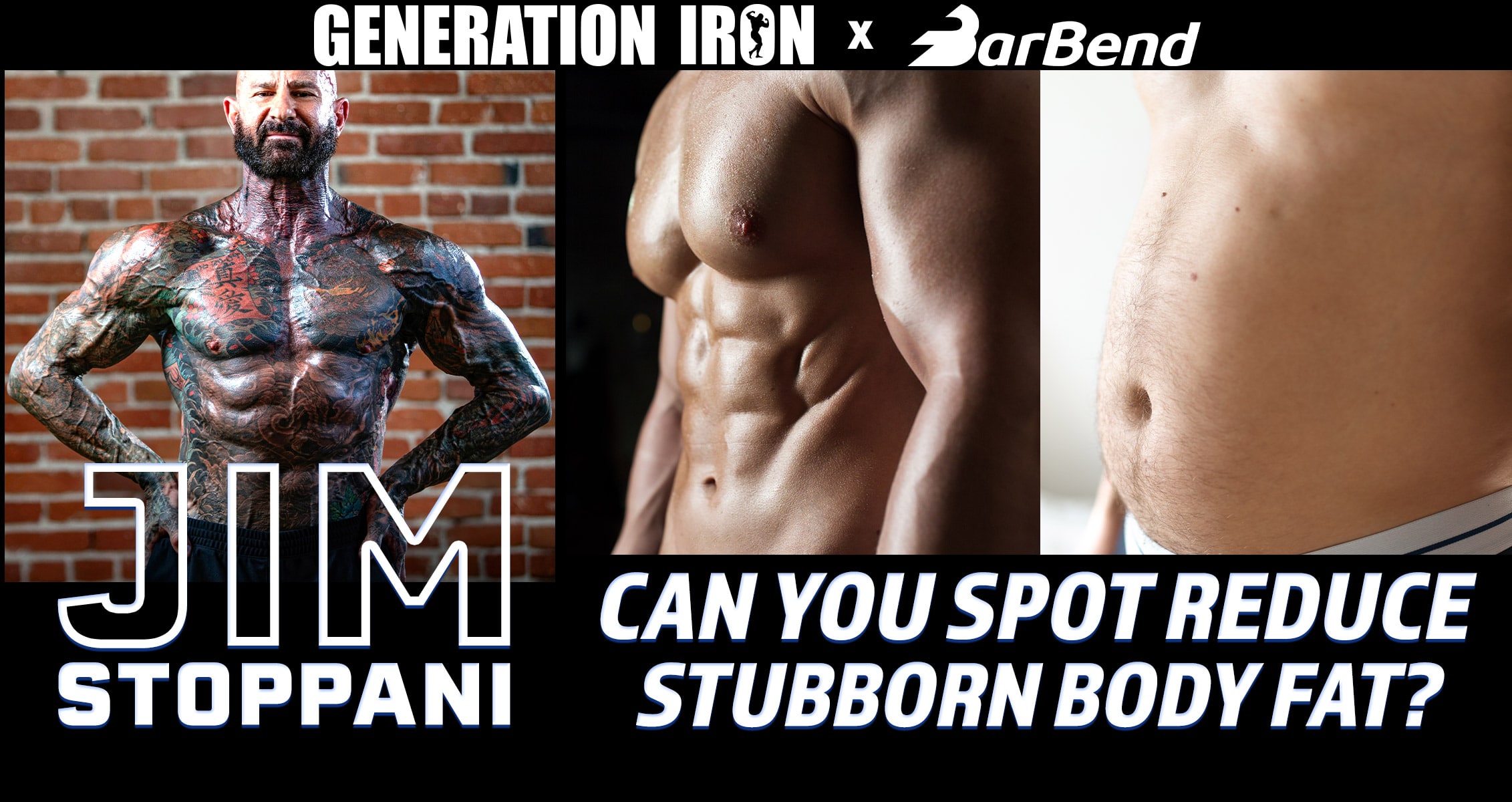
Jim Stoppani: Can You Spot Reduce Stubborn Body Fat With This Science-Backed Technique?
[embedded content]
Jim Stoppani talks about the myth of spot reducing stubborn body fat… and the one promising study that might turn the myth into a reality
Everyone from bodybuilders to the average Joe wishes that stubborn body fat can be reduced. But science has proved time and time again that this is impossible. No, doing crunches will not burn belly fat (though it will strengthen your core and abs). This is disappointing for those who have a muffin top they are trying to lose. But it’s also a real challenge for bodybuilders who need to keep their physique in perfect proportion despite lagging body parts. That’s why we turned to Jim Stoppani for some enlightenment in regards to burning stubborn body fat. In our latest GI Exclusive, Jim Stoppani reveals a study that just might prove spot reducing fat is finally possible.
Not everyone gains weight evenly. While some my gain wait uniformly, others have fat that parks in random and frustrating places. Whether it’s a pot belly, love handles, or fatty thighs. Disproportionate weight gain is annoying at best and self-hating at worst. It can make off the rack clothing hard to fit and shopping challenging. It can make you feel bad about your self image. To be frank, it sucks. So it’s no surprise that so many individuals turn towards spot reduce tactics, plans, and products. None of them work, mind you, but people want so desperately to find an answer they buy in.
Jim Stoppani also points out that this poses an additional challenge for competitive bodybuilders during contest prep. The main goal after bulking is to cut down and perfect an aesthetic symmetrical physique. But if you have genes that hang fat in some places longer than others – cutting weight becomes more challenging. How do you cut fat in your quads without reducing size in your chest or arms? It’s part of the meticulous challenge of being a bodybuilder.
While Jim Stoppani agrees that, in general, spot reducing fat is not possible. He did come across one study that might change the game if it can be corroborated and repeated with the same success.
Can extremely high weightlifting volume spot reduce fat?
Jim Stoppani dives into a study that had subjects do extremely high reps of leg extensions. And by extremely high, he’s talking about 100+ reps. What the study showed is that the high rep exercise pulled from the body’s fat for energy. This is typical especially when carb or glucose stores are low before an exercise. But what was interesting of note – is that the study was able to track where the fat stores were coming from. The study showed that the fat was being burned specifically from the quads.
Jim Stoppani explains that this method was essentially cardio with leg extensions. And that one can assume based on this study – that the same kind of high rep exercise on any body part can produce the same results. Now this would need to be studied further – but it showed promise that spot reducing fat may be possible.
Is this something that can translate into competitive bodybuilding? That remains to be seen. It’s also not clear how effective that targeted fat loss is. How much fat is being burned from the area? Would other areas of the body still reduce in size? That would still be a problem for mass monster bodybuilders during contest prep.
Likely, there is no silver bullet to magically spot reduce fat. And while this might not be helpful for a pro bodybuilder – the high rep weightlifting tactic might be good for the average joe looking to trim down a pot belly and not worried about a perfect symmetrical physiue.
Wrap Up
The truth behind most exercise principles is that there is no easy way to stay fit. And there is no easy way to build muscle. However, these kind of tips and techniques can perhaps make a difference in the long run. It’s still challenging. It still requires consistency and focus. But perhaps this new study provided by Jim Stoppani can change the game for those who have long struggled to remove stubborn body fat.
You can watch Jim Stoppani go into full detail in our latest GI Exclusive interview segment above! And make sure to check in every Monday for new explainer videos with Jim Stoppani each week!
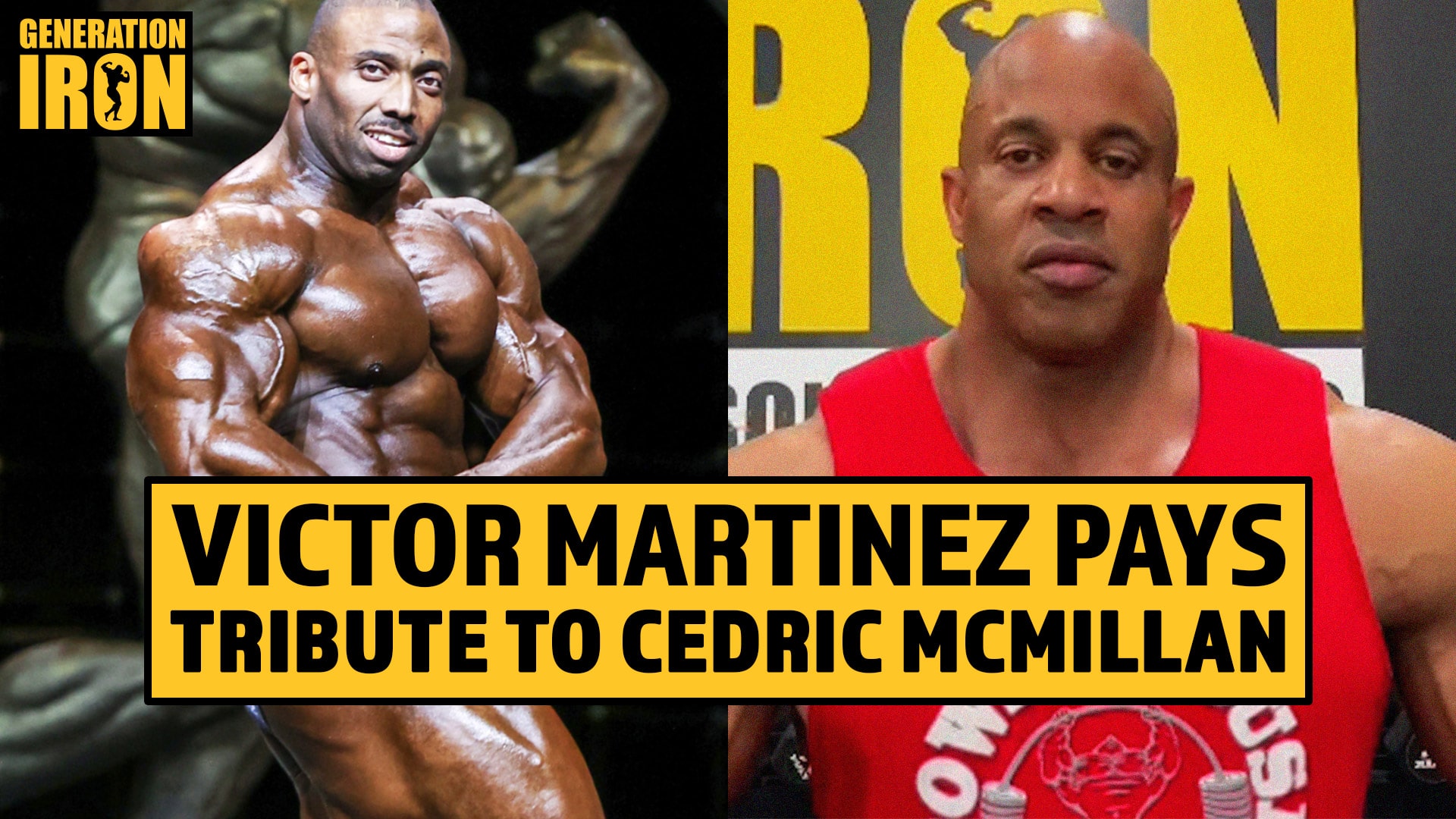
Victor Martinez Pays Tribute To Cedric McMillan & Shares Favorite Memory
[embedded content]
Victor Martinez shares some memories with Cedric McMillan highlighting his intense focus and playful sense of humor
On April 12, 2022 the bodybuilding world lost another fantastic and vibrant bodybuilder – Cedric McMillan. He passed away at 44 years old, far too young and one of many over the past year that have left too soon. Many in the bodybuilding community have been paying tribute and sending condolences since the news was announced. After a training session at the Generation Iron Personal Training Facility, Victor Martinez recorded a video paying tribute and sharing some stories about the late Cedric McMillan.
While Victor Martinez was not extremely close with the bodybuilder, he had spent time with him a small handful of times. Two moments in particular took place at the Arnold Classic. Once in 2019 and a second time in 2021.
Many knew Cedric McMillan from his on stage persona – a very focused and thoughtful bodybuilder that aimed to make big changes to the sport with his more classic style physique. Despite the new Classic Physique division, McMillan remained in the Men’s Open category – seemingly looking to prove a classic style physique can stand tall as champion. He proved just that in 2017 when he won the Arnold Classic.
But despite this introspection and focus – Cedric McMillan was also a playful and funny man. This was seen in his interactions with Arnold Schwarzenegger after winning the 2017 Arnold Classic. It’s that side of McMillan that Victor Martinez focused on in his memories of the late bodybuilder.
Victor Martinez admitted that before meeting Cedric McMillan, he “never knew how to read him.” So his sudden witty bouts of humor surprised him on numerous occasions. One came in 2019 at the Arnold Classic. McMillan looked focus about to step on stage. As a sort of courtesy/small talk, Martinez asked him, “Are you alright?” Without a beat, McMillan responded with a grin, “You expect me to be Poppy Joe and laughing?” Victor Martinez appreciated both his humor and focus in the moment. Two qualities that would come to define the champion bodybuilder (alongside his fantastic physique).
Victor Martinez then shares a second story from last year’s 2021 Arnold Classic. Though neither were competing, they had an opportunity to speak and catch up backstage. Martinez had noticed that Cedric McMillan was working on building some sort of project on social media. Martinez asked him about it and McMillan responded, “Well, Vic, if you build something you probably have less kids.” Another funny quip without a beat.
While McMillan’s humor was evident on stage – his more focused and serious side normally took the lead. Which is why in his final words during his tribute message, Victor Martinez wanted to remember the light and humor behind Cedric McMillan’s personality:
“If you took him serious, you probably took him too serious. But he was a standup guy… and every word that came out of his mouth was nothing but truth. I wish everybody was like that. Cedric, miss you bro.”
– Victor Martinez
Cedric McMillan’s loss is yet another tragic moment in a rough to years for the sport of bodybuilding. Generation Iron would like to once again send condolences to the friends and family of McMillan at this time. As Victor Martinez said – he was a stand up guy and will truly be missed.
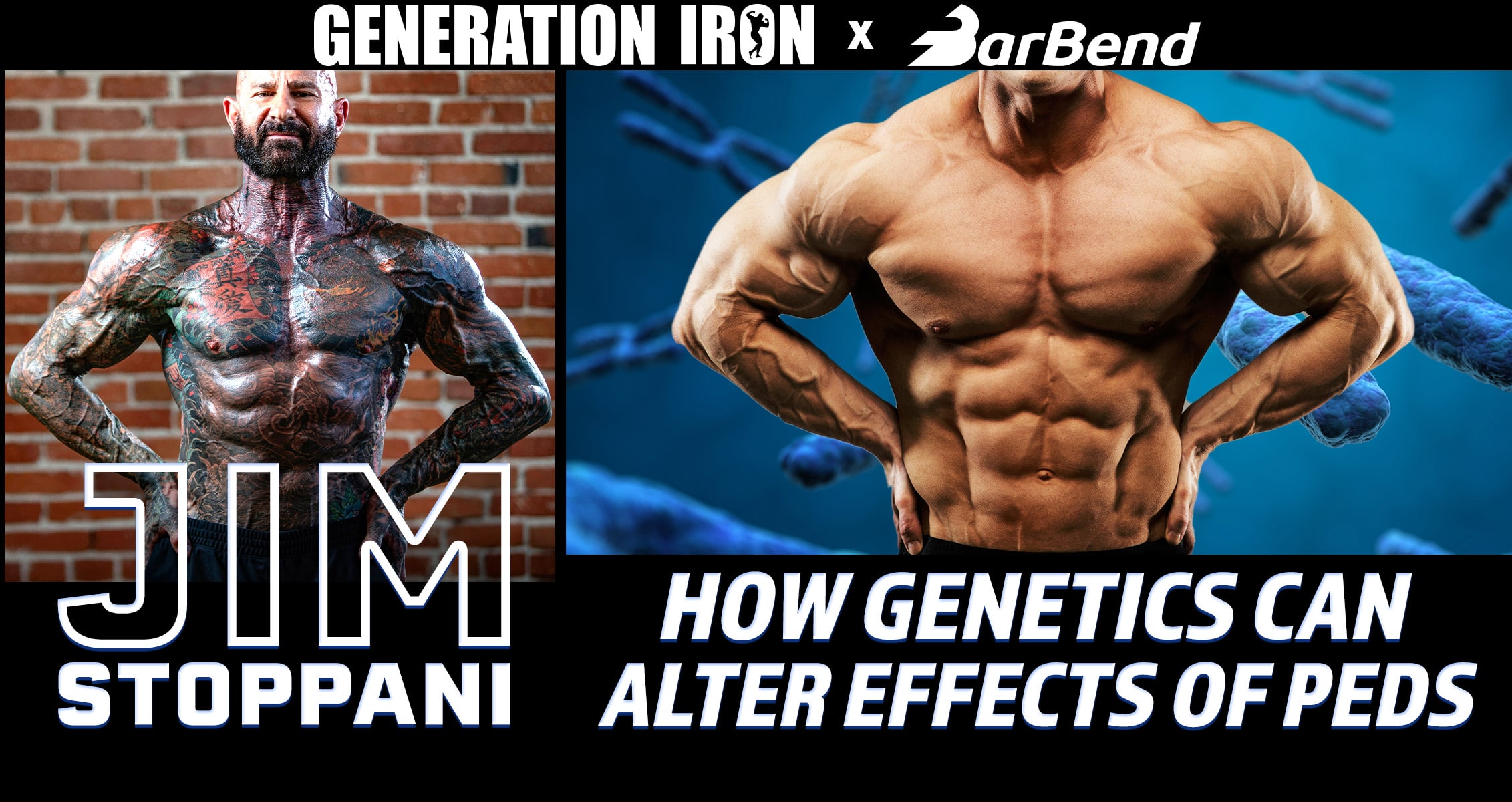
Jim Stoppani: The Role Of Genetics In PED Usage In Bodybuilding
[embedded content]
How genetics affect bodybuilding physiques and PED usage, explained
When we speak about some of the biggest legends in athletic history, the term “gifted” is often used. There’s another word for that – genetically blessed. Hard work can help accomplish great things but hard work combined with superior genetics creates bonafide unforgettable legends. To what degree does this have an effect in bodybuilding when it comes to nutrition, training, and physique aesthetic & size? And do genetics play a large role in how competitors’ bodies react to PEDs? We partnered with Barbend in our latest GI Exclusive interview to discuss with Jim Stoppani the role of genetics in bodybuilding and PED use.
It’s often said that genetics play a large role in bodybuilding. This can seem on the surface somewhat discouraging to aspiring bodybuilders. What’s the point of putting all of that work in if you simply don’t have the right genetics to compete with the best in the world? However, there have been pro bodybuilders that prove it is possible to break the mold. Even Arnold Schwarzenegger himself has admitted that his genetics were not ideal for the physique he desired (and eventually obtained).
Hard work can make up for less than ideal genetics. You’ll just simply have to work harder than other individuals. Then occasionally there is the rare breed of human who can push harder than anyone else while also having the best genetics of anyone else. Those become iconic untouchable legends – such as Ronnie Coleman.
So the big question is – just how far can genetics affect the outcome of a bodybuilder’s hard work? And in being transparent about the realities of the industry – how much do genetics affect the way PEDs react in a person’s body? We turned to Jim Stoppani to break it down with some of his knowledge.
How genetics affect bodybuilding physiques
Jim Stoppani confirms what many passionate fans and athletes already know – genetics are an unavoidable factor in success for bodybuilding. This actually expands out beyond our sport. Any athlete on the pro level can find improved success if they have “gifted genetics.”
To help explain this in simpler terms, Jim Stoppani uses core genetic traits as an example. Features such as eye color, hair color, and height are not something we can control. They are predetermined via our genetic code. We can’t “train” our eyes to turn blue. This is the same mentality behind bodybuilding physiques.
Some bodybuilders will react to training and diets differently than others. Some will find the simple act of hardcore training easier to bear. The debate of nature vs nurture will be ongoing for all of human existence. So it’s possible as a community we may misattribute genetics to something that is actually simply hard work and life experience (and vice versa).
But overall, Jim Stoppani’s simple example proves that genetics do have a baseline effect. If you give two bodybuilders the same diet, training routine, and supplements – they will not have the exact same physique outcome.
Can genetics make PEDs effect individuals differently?
Jim Stoppani also touches on PEDs such as steroids and how genetics may or may not affect the reaction our bodies have to these drugs. Stoppani explains that, of course, genetics will make drugs react different for each individual. This is actually a big part of the reason drugs like steroids are regulated and banned for athletic use.
In the United States, steroids can only be prescribed by a doctor. That very factor is evidence of how a drug can affect each individual differently. A doctor or medical professional needs to evaluate what your body can handle. It’s different on a case by case basis.
Jim Stoppani uses cigarettes as a more basic example of this concept. There is no doubt that cigarettes cause damage to the body and long term health effects. However, there will always be certain smokers who live to be 90. Conversely, there can be someone who never drank or smoked a day in his or her life who suddenly dies of a health emergency.
We can’t control genetics – but they control us. It’s a factor we must all consider when it comes to not only our ability in a sport like bodybuilding – but our health when taking advice as well.
Wrap Up
You can watch Jim Stoppani go into full detail about genetics in bodybuilding and how they can affect reactions to PEDs in our latest GI Exclusive interview segment above. Make sure to swing by every Monday for new Jim Stoppani explainer videos every week!
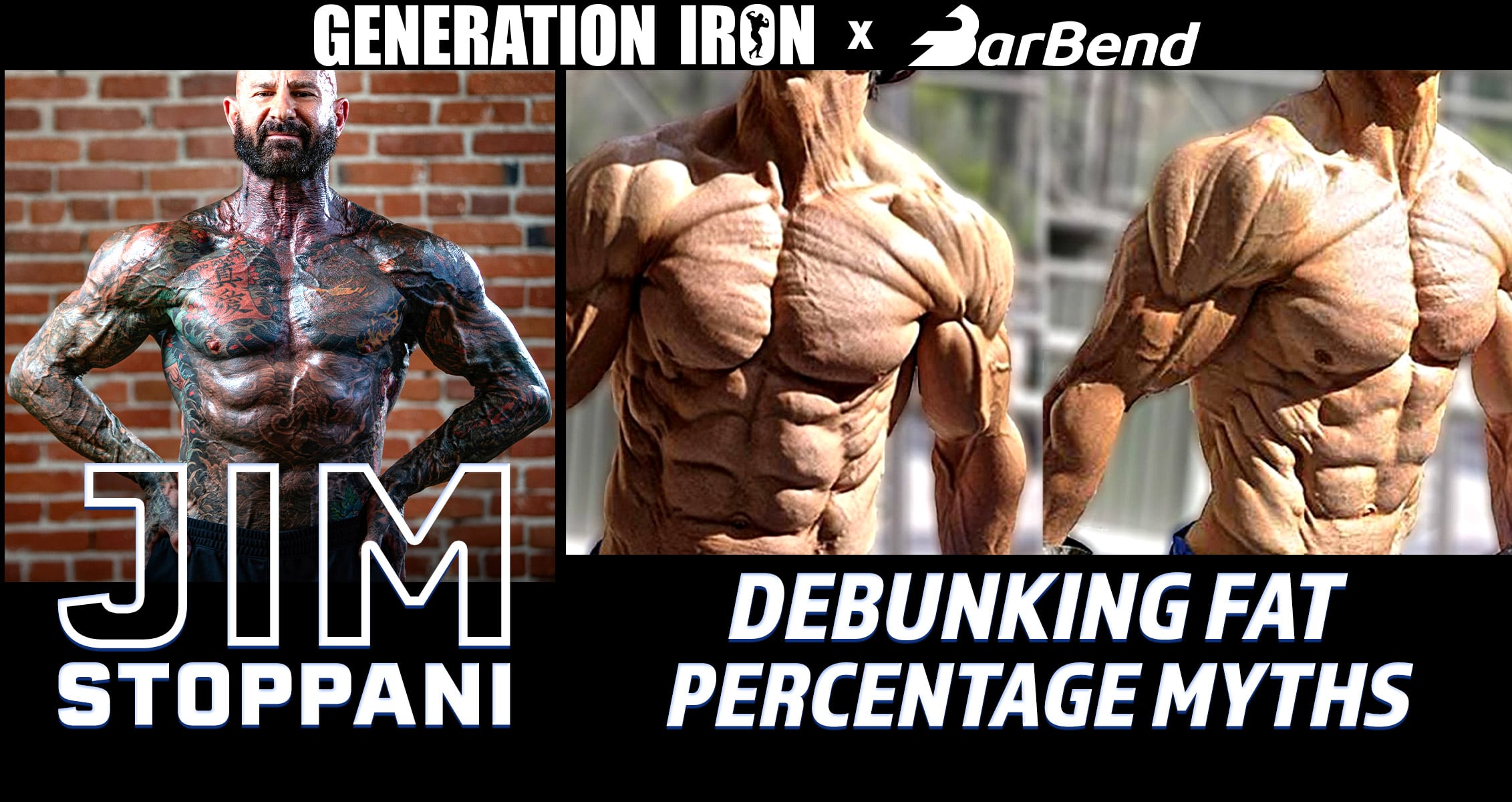
Jim Stoppani Debunks The Biggest Body Fat Percentage Myths
[embedded content]
Jim Stoppani explains body fat percentage realities for athletes vs average individuals.
Ronnie Coleman once stated that during his prime he held under 1% body fat. Many accused this as being a lie. That it’s impossible to bring your body fat percentage lower than three or four percent due to vital organ fats your body needs to function. But in the world of extremes such as bodybuilding, there are athletes who truly aim to reach these kind of goals. Is it really possible? In our latest GI Exclusive interview partnered with Barbend, Jim Stoppani debunks the biggest myths about body fat percentage and the real possibilities (and dangers) of extreme fat loss.
In the world of bodybuilding, getting as conditioned and shredded as possible is always the ultimate goal when stepping on stage. The hard work put into sculpting a physique can be shown best without soft fat hiding the “goods” so to speak. But not only is the general act of “cutting” for a competition dangerous, having unrealistic goals of extreme low body fat percentages is unhealthy as well. As an athlete, there’s nothing wrong with wanting to look conditioned – but where is the real line? How low can you go and stay healthy?
And even when opening up to the general public – the expectations on how a person “should” look has led to a variety of eating disorders and body dysmorphia. That’s why we connected with Jim Stoppani to talk about the real facts behind body fat percentage, what’s realistic and what myths we can debunk here and now. Let’s jump into it.
What is a normal body fat percentage range?
Body fat percentage is the relative amount of fat you are holding on your body compared to your overall weight and size. That’s why we speak in terms of percentages rather than specific units of measurements. Depending on your height and overall weight – the ideal numbers can be different.
So when it comes specifically to body fat percentage – the healthy amount is often much higher than individuals seem to realize. Jim Stoppani explains that the average healthy range of body fat tends to be somewhere between 15-20%. These values shift depending on if you are a man or a woman. Women tend to carry more body fat genetically.
Jim Stoppani, however, land squarely at 5% body fat typically. This is due to his consistent and fitness focused lifestyle. As you can see, that’s a big gap from the typical healthy average. And it’s this kind of gap that can lead an average non-athlete individual to expect a lower number. Jim Stoppani wants to clear the air for those who focus to heavily on their body fat percentage. If you are in a 15-20% range, don’t worry. You’re not fat. And it’s not a sign, generally, that you are unhealthy.
Could Ronnie Coleman’s below 1% body fat claims be true?
It’s impossible to know whether or not Ronnie Coleman’s past statement about being below 1% is true. However, it is possible despite what many would have you believe. Typically, it’s understood that an athlete cannot go below 3-4% body fat due to the vital fat your organs need to function. This is true. But that doesn’t mean there isn’t a way to bring that percentage lower.
Jim Stoppani explains that Ronnie Coleman, theoretically, could have gotten his body fat down to below 1%. However, to do that he would have had to turn to some serious drugs. No only that, but the very act of burning such vital fat is extremely unhealthy and dangerous. So yes, it is possible. But no, you shouldn’t aim for such a goal.
Jim Stoppani can’t speak for Ronnie Coleman, but he does have a fair understanding about pro bodybuilding. He reminds us that it’s an extreme sport and we’ve seen athletes go to extreme measures to succeed. Ronnie himself shattered the barrier of just how massive and shredded a bodybuilder could be on stage. So it’s not beyond reason to think he would have pushed hard to some dangerous areas to bring his body fat down extremely low as well.
Ultimately, this is all speculation. We can’t determine the validity or the actions of Ronnie Coleman regarding his body fat claims. But it is important to know the truth. While it’s not naturally possible, there are ill-advised ways to bring your body fat below 3%.
When should you worry about having too high body fat?
So how much fat is too much fat? When should you start actually worrying about that percentage number as an average non-athlete individual? Jim Stoppani explains that you should only be worried if you are over 30% body fat. That’s when you are considered obese. Anything below that should not be a worry from a general health standpoint. Unless you are trying desperately to look muscular and shredded – don’t get too bent out of shape over a 16% or 18% body fat level.
Wrap Up
Whether you are a competitive bodybuilder or just a fan, it’s easy to get sucked into the alternate reality of body fat percentages in bodybuilding. However, it’s important to remember that there is a wide difference between average healthy body fat percentages and what pro athletes do (and risk) to be the best in the world.
You can watch Jim Stoppani explain in detail, and debunk some common misconceptions, in our latest GI Exclusive interview segment above.
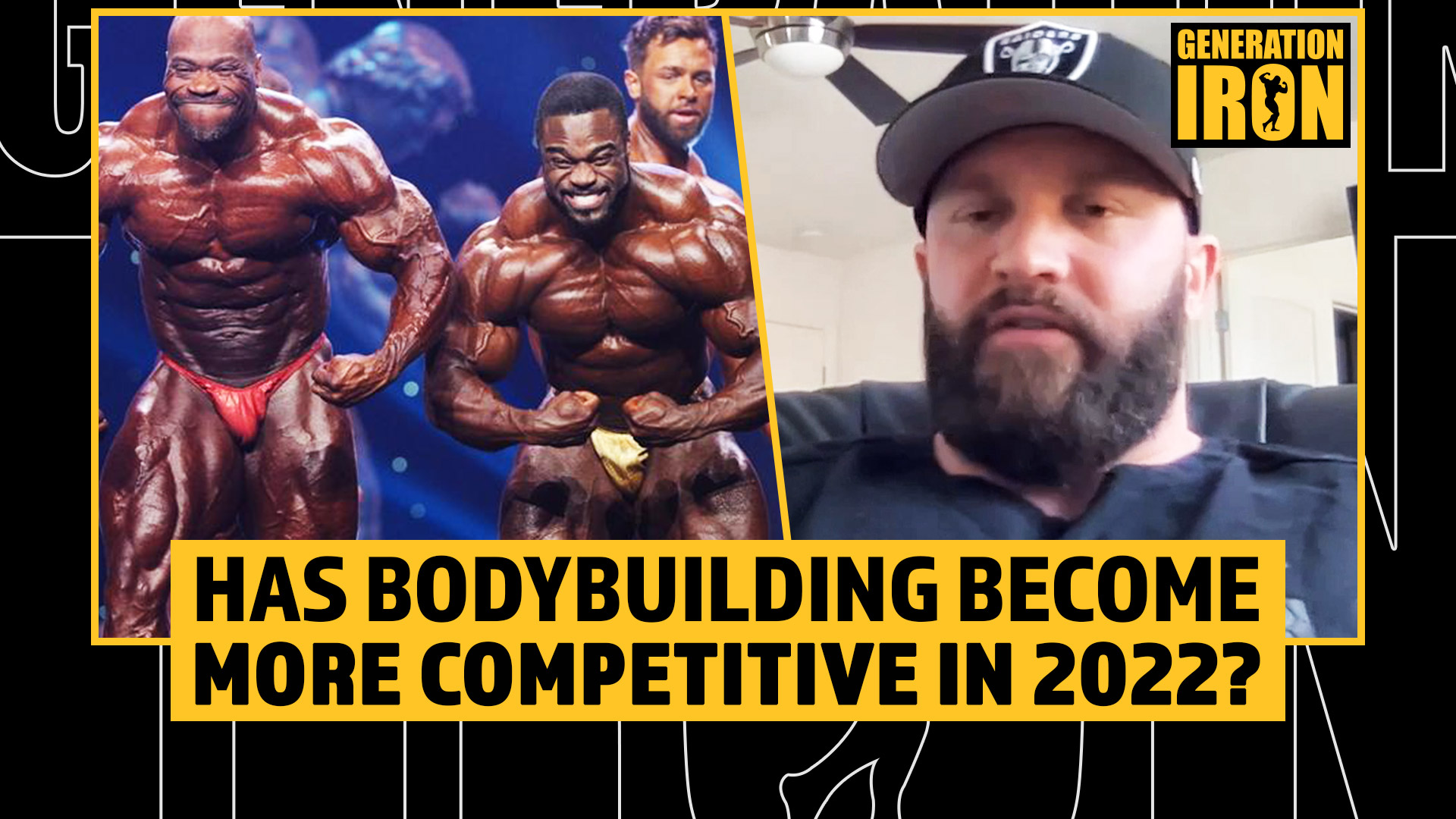
Stanimal Answers: Has Pro Bodybuilding Become More Competitive In Recent Years?
[embedded content]
Stanimal De Longeaux reflects on the current crop of talent competing in pro bodybuilding and if the sport has become more competitive.
There was a time not too long ago where fans of pro bodybuilding felt that surprise was missing from the sport. Reigning champions maintained such talent and power – that it was easy to predict who would win big shows like the Arnold Classic or Mr. Olympia. Flex Lewis won every show he competed in. So did Phil Heath. Their reign felt impossible to overcome. Since then something changed – and now the outcomes of pro bodybuilding competitions have become more unpredictable. There have been many upsets and the Mr. Olympia title has seen four different champions over the past five years. Has the talent pool become more even and competitive? In our latest GI Exclusive, Stanimal De Longeaux compares the sport when he started vs today and whether or not it’s truly become more competitive.
There’s a big reason why the Classic Physique division has garnered so much attention for such a relatively young category. Yes, the personalities and physiques on display are top notch. But more than that, the level of competition has been thrilling and truly unpredictable. With exception of Chris Bumstead in recent years – it’s nearly anyones game at every major Classic Physique competition. In fact, it’s become so popular that the Boston Pro 2022 ended the night with Classic Physique rather than the typical Men’s Open.
This is something Stanimal De Longeaux is very well aware of. He’s right there in the middle of it as a competitor. Suddenly more doors are open as he continues to improve and perfect his physique.
Stanimal has also noticed that it seems this level of competition is starting to make its way into Men’s Open as well. Big Ramy is starting to get a foothold with two wins in a row – but we’ve had four different champions in quick succession at the Mr. Olympia. The old guard are slowly stepping down and young talented competitors are finally coming into their own. The patterns have shifted. things have become unpredictable.
While that might not be the reason Stanimal moved from Classic Physique to Men’s Open – we can assume it certainly was a factor. As Stanimal continues to discover what division is a best fit for his genetic frame, he is finding that there is no longer single guaranteed repeat champions in either Classic Physique or Men’s Open.
On one hand, this leads to more opportunity. There is no longer a Phil Heath who will shut out the competition and change the battle for everyone to see who gets second place. However, this increased competition simply means the battle becomes more barbaric – so to speak. There are more close calls, more hungry competitors with an actual shot for first place. It’s thrilling to see on stage – and it helps the athletes push each other to great new heights.
Stanimal believes that, for Classic Physique, this is natural for a new division. The first few years were athletes learning what defines the division. Now that it’s grown from its infancy – we are still with that first generation of athletes. Nothing is fully set in stone
On the other hand, Stanimal notes that the Men’s Open division is simply going through a transitionary period that is finally blooming. Gone are the yesteryears of Phil Heath, Kai Greene, and Dexter Jackson. New names such as Nick Walker, Hunter Labrada, and Hadi Choopan are finally coming into their own. It’s an exciting time and leading to more heated battles on stage. This is great not only for the athletes but also for the fans.
Where will Stanimal’s place be during this competitive time? During our interview, he explains that he’s started working with a new coach for his off season prep. He wants to take his health and his physique to the next level and enter into the Men’s Open division as a true threat among the new generation of athletes. Only time will tell how he will fair in such a hungry crop of athletes.
You can watch Stanimal De Longeaux discuss the growing competitive nature of modern bodybuilding and his new contest prep plans for Men’s Open in our latest GI Exclusive interview segment above.
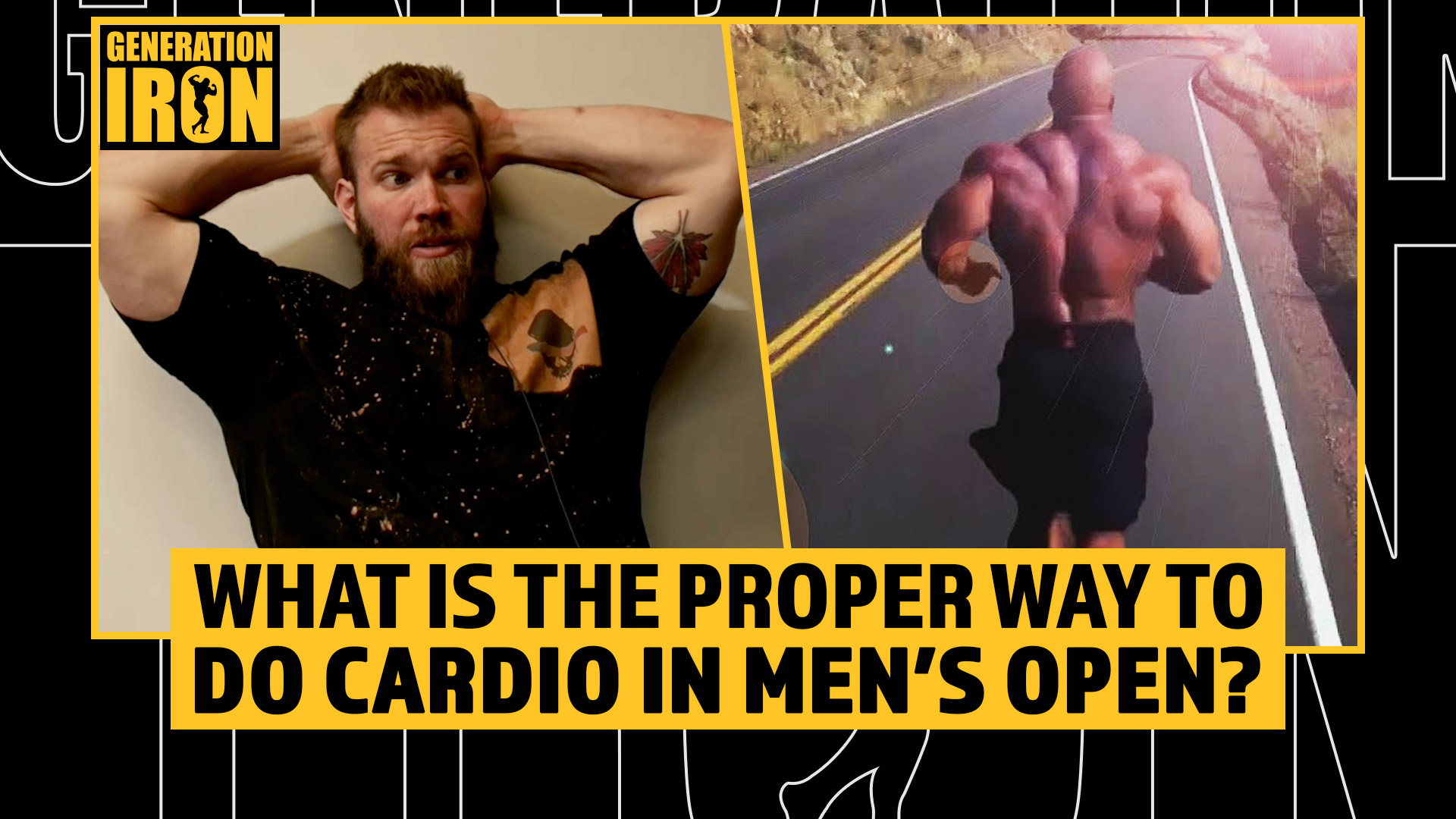
Jordan Shallow Answers: What Is Cardio’s Place In Men’s Open Bodybuilding?
[embedded content]
Jordan Shallow comments on different cardio tactics in Men’s Open Bodybuilding.
Bodybuilders hate cardio. At least, that’s the stereotype you often see within the sport. And this makes sense. Men’s Open competitors weigh in at around 250+ pounds. That’s a lot of weight, muscle or not, to move around with aerobic movement. That being said, all serious bodybuilders understand that cardio is a necessary part of training – whether they like it or not. The question is – how much cardio is too much? And how much is too little? What is the proper tactic for cardio in mass monster categories like Men’s Open bodybuilding? In our latest GI Exclusive, Jordan Shallow shares his advice on how to properly utilize cardio in a Men’s Open training program.
The biggest fear bodybuilders have about cardio is that it could burn away some of that hard earned muscle. Muscle, of course, is the key factor in sculpting a perfect physique and the lifeblood of a competitive bodybuilder’s career. However, a bodybuilder also needs to go through a cutting phase during contest prep to be as conditioned and shredded as possible on game day. Cardio is a part of that equation. On top of this, cardio has universal health benefits for your heart and lungs that should not be ignored.
So what’s the right answer here? We’ve heard of some successful pro bodybuilders who do zero cardio and others who do two hours of cardio during contest prep each day. What is the truly best tactic for including cardio into a Men’s Open bodybuilding program? The Muscle Doc Jordan Shallow gives his take on this very topic in our latest interview segment.
How to properly use cardio in a Men’s Open bodybuilding training program
Jordan Shallow believes that the days of a Men’s Open bodybuilder doing two hours of cardio during contest prep are over. The reason? Because more athletes are understanding that cardio during the offseason is not taboo but in fact vital towards building the proper core for contest prep later.
Shallow believes that a part of this shift is happening because competitors are wising up to the health risks of modern bodybuilding. Unfortunately, we had a tragic year of bodybuilding deaths in 2021 that has continued to bleed into the beginning of 2022. While we cannot directly correlate this to any specific aspect of the bodybuilding lifestyle – athletes are becoming more self aware of their health.
Jordan Shallow believes that doing three days of light cardio per week during the offseason is a huge benefit for a competitive athlete. It helps manage physical stress and also helps manage the emotional stress that comes with the competitive bodybuilding lifestyle.
Over time of building that simple cardio base during the offseason, a bodybuilder will require much less cardio during contest prep. If you combine this with thoughtful and tactical weight training that has cardio elements – you have a much more balanced training program and run less of a risk that you will burn muscle away.
Jordan Shallow points out Milos Sarcev’s giant sets as an example. Here’s what Shallow had to say in this example:
“You do a Milos giant set, that’s cardio. You’re running a marathon with your lats. You’re running a Milos lat marathon. But if you have a strong aerobic base you’ll be able to derive a more muscle building benefit in the actual duration of the set as well as have a greater toolbox to pull from to recover from that stimulus.”
Wrap Up
While Jordan Shallow is not a Men’s Open bodybuilder himself, he sees these kinds of changes happening on the inside of the industry. He believes that the taboo behind cardio is starting to lose its grip – which is beneficial for all in both terms of overall health and better contest prep.
You can watch Jordan Shallow’s full comments in our latest GI Exclusive interview segment above. He also talks about how the general public can learn to count their macros for fat loss.
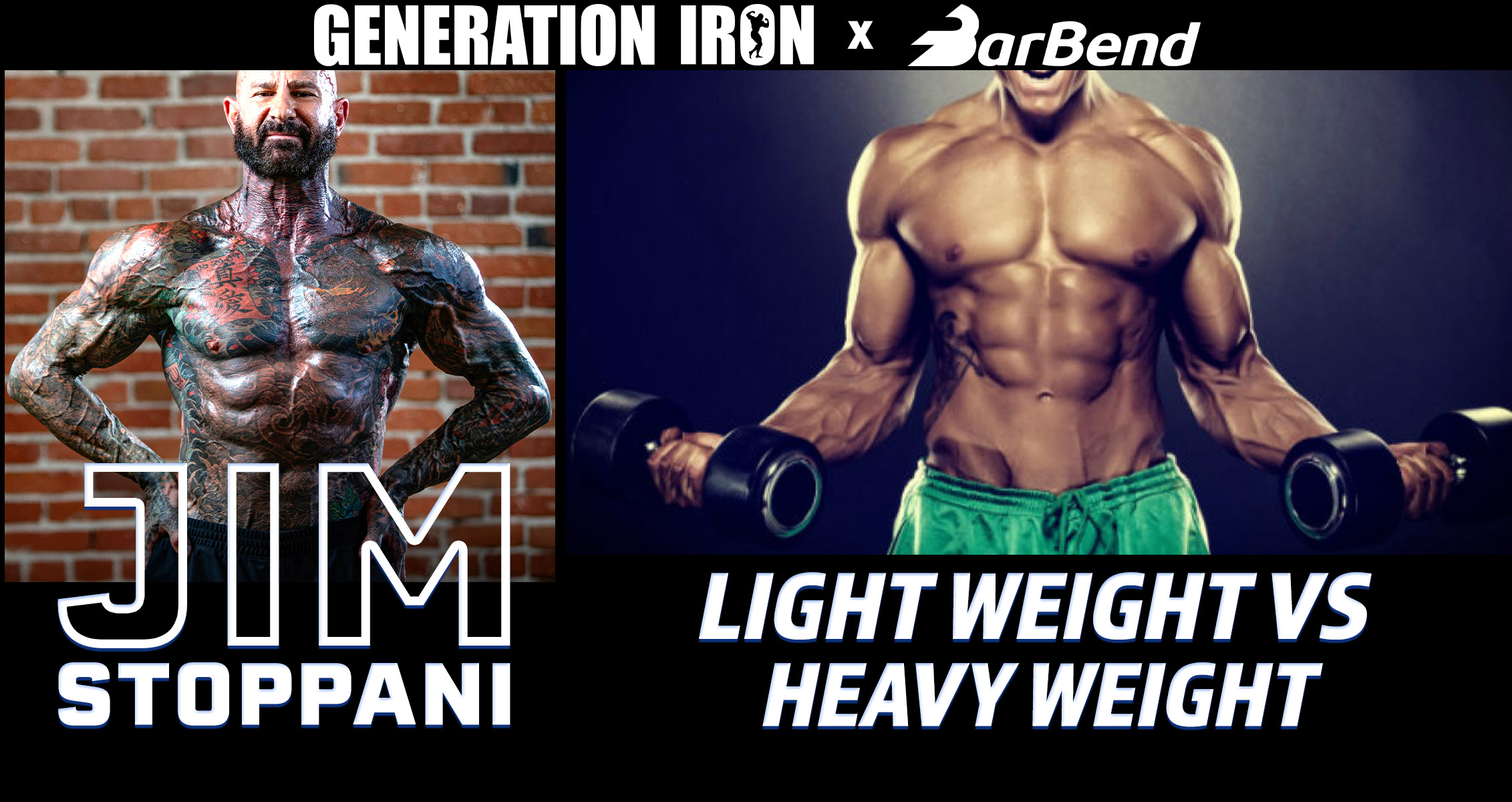
Jim Stoppani Answers: Should You Lift Light Weight Or Heavy Weight For Optimal Muscle Growth?
[embedded content]
Jim Stoppani explains the light weight vs heavy weight debate and which is best for optimal muscle growth.
For those who first start weightlifting, it might seem obvious that the more weight you lift the more muscle you gain. But that’s not necessarily true. There are various ways to build muscle and in today’s age of exercise science the tactics have become even more varied. But in the bodybuilding world, the biggest debate often comes down to light weight vs heavy weight. Aka – do you lift light weight with high reps or heavy weight and low reps? Both tactics are used by successful pro bodybuilders – proving their validity. But is one truly better than the other? In our latest GI Exclusive, Jim Stoppani explains the light weight vs heavy weight debate and breaks down which is best for ultimate muscle growth.
For those who love bodybuilding and weightlifting, there is nothing more exciting than seeing someone lift an insane amount of weight (or performing it yourself). It’s the ultimate proof of your ability in the gym. A showcase of just how strong you’ve become with your years of training. From an outward glance, it then seems that lifting hardcore heavyweight is the most inspiring and motivational tactic a bodybuilder can commit to.
However, other bodybuilders have shown time and time again that light weight can be an effective tactic as well. Dexter Jackson, for example, is a former Mr. Olympia champion and also the most decorated bodybuilder in the history of the sport. He has always promoted light weightlifting at high reps over heavy weight. In fact, he claims it is the reason he was able to continue his pro career into his 50s.
So what’s the science behind this? Can we scientifically prove that one style of training is more effective than the other? We turned to Jim Stoppani to help answer the question.
Comparing muscle protein synthesis of light weight vs heavy weight
Jim Stoppani starts off by mentioning and study that compared two lifting tactics. One group of individuals lifted 30 reps of light weight. The other group lifted five reps of heavy weight. The study was focusing on muscle protein synthesis – a key factor in muscle growth.
What the study concluded, Jim Stoppani explains, is that both groups achieved the same amount of protein synthesis. But there was a catch. This was only true if the individual trained to failure. This study further cements the statements made previously on Straight Facts by Jerry Brainum. Particularly for lifting light weight, training to failure is necessary for optimal muscle growth.
This is easier said than done. Many individuals who lift light weight at high reps often believe they are hitting failure but are actually missing the mark. The mind is very powerful and can psych a person out from achieving the true limit of their strength abilities. More often than not, those who struggle building mass muscle with lightweight tactics simply aren’t training to failure enough.
So does this mean light weight and heavy weight training are equal?
With this study, it seems that training light weight or heavy weight comes down to personal preference – as it yields the same results. Jim Stoppani points out that this isn’t necessarily true. Stoppani explains that protein synthesis is not the only factor in muscle growth.
For example, Jim Stoppani explains how lifting heavier weight leads to increased strength. That increased strength allows for lifting even more weight. This all compounds to allow for increased muscle growth. This is like compound investing in the stock market rather than paying the same regular payment into a savings account.
On the flip side, Jim Stoppani explains how light weight at high reps is more effective at increasing blood flow. This bring more nutrients to the muscle – which helps bring benefits towards increased muscle growth.
Conclusion: combine light weight and heavy weight for best results
Ultimately, this is why Jim Stoppani always recommends a combination of both tactics. Not only does a change up to your routine every 4-6 weeks help prevent plateaus, but the mix of light weight and heavy weight will bring added benefits that would not be found in sticking only to one tactic.
Weightlifting and bodybuilding progress is never about finding one routine and sticking with it forever non-stop for the rest of your life. It requires constant variety, adaptation, and change to keep growth from plateauing.
You can watch Jim Stoppani go into full detail about light weight vs heavy weight training in our latest GI Exclusive interview segment above. Make sure to stick around each Monday for new episodes of Jim Stoppani’s explainer videos.
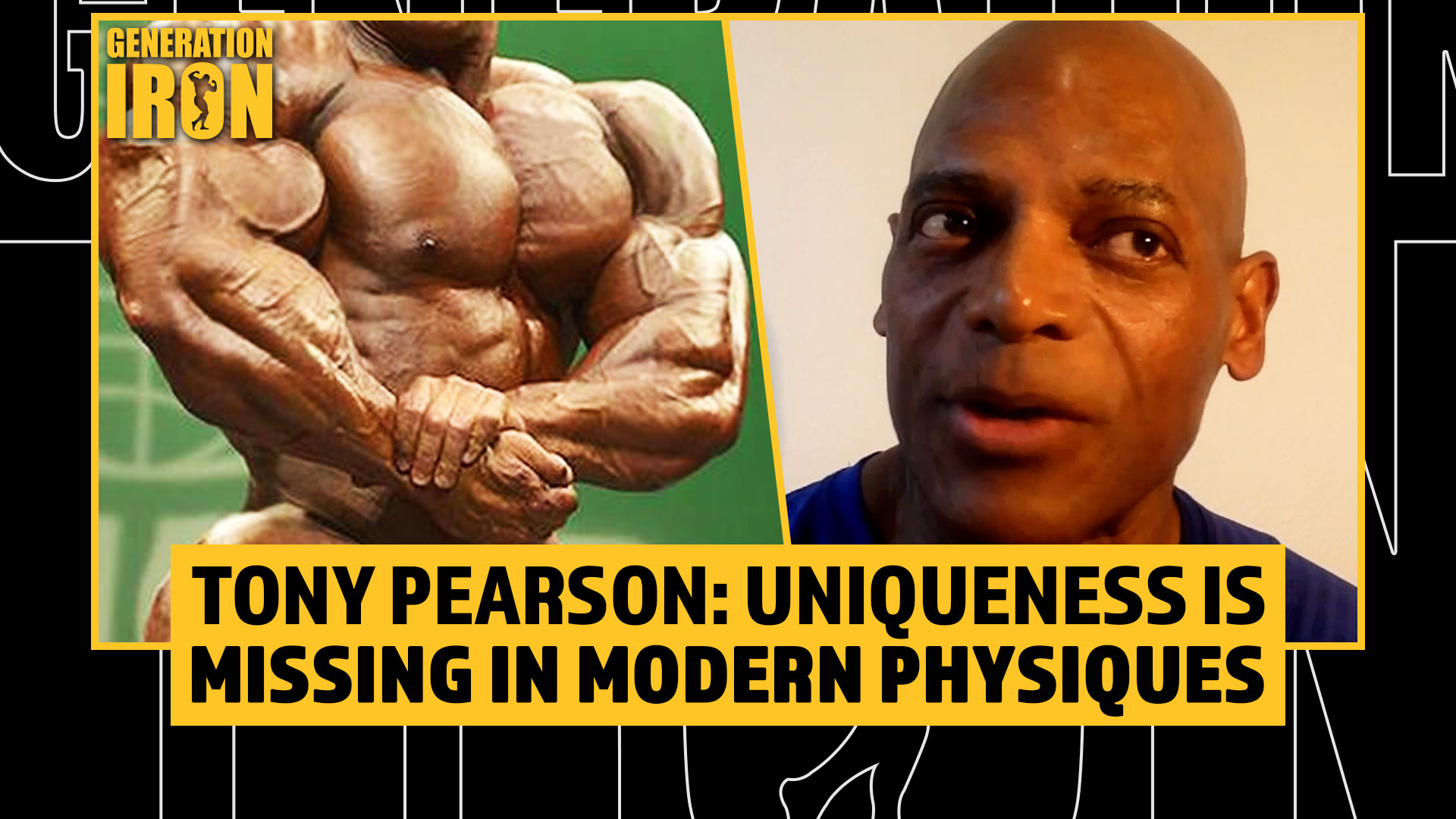
Tony Pearson: Uniqueness Is Missing From Pro Bodybuilding Physiques Today
[embedded content]
Tony Pearson picks his top 5 bodybuilders of all time and laments the lack of uniqueness in modern bodybuilding physiques.
What started as a discussion about the greatest bodybuilder physiques of all time pivoted into a conversation about modern bodybuilding vs past eras. Tony Pearson has a hard time picking the top 5 greatest bodybuilders of all time – because so many classic bodybuilding legends held truly unique physiques. It’s a kind of stamp of originality that Pearson doesn’t see as much in pro bodybuilding physiques today. In our latest GI Exclusive interview, Tony Pearson explains how uniqueness is the missing X factor in modern bodybuilding.
During our conversation with Tony Pearson, we asked him to list his top 5 favorite bodybuilding physiques of all time. He started listing off names such as Sergio Oliva, Arnold Schwarzenegger, Frank Zane, and Franco Columbu. We noticed one commonality in his list – they were all Golden Era bodybuilders with a bigger focus on aesthetics rather than mass monster size.
We pointed this out and asked him about more modern legends such as Ronnie Coleman, Dorian Yates, and Phil Heath. Tony Pearson acknowledges that they are true legends – but perhaps due to primarily competing in the 70s and 80s, Pearson has a particular taste for the more aesthetic golden era.
That being said, he also believes that the most current era of bodybuilding is missing a certain x-factor. Tony Pearson isn’t criticizing modern bodybuilding’s work ethic or skill. Rather, he believes that there is simply a lack of uniqueness in the pro bodybuilding physiques we see on stage today.
“I mean you can’t say who’s the top five because everybody is unique,” Tony Pearson states in our interview. He continues:
“And that’s what we are missing I think today – is the uniqueness of the pros. Because in those days you can cover the face and hold a picture – you know who that is. You know who’s back that is. You know who’s bicep that is. You know who’s legs those are. You know. You know’s abs. Who does that vacuum. We know. And that’s unique. You’re a unique piece of work.”
Tony Pearson goes on to mention Kai Greene, seemingly the most recent pro bodybuilder he can think of that felt unique in his physique as well as his posing. In fact, a lot of the uniqueness can also come in the form of posing. Something that the modern bodybuilders are stuck living in the shadow of from previous legends.
Tony Pearson doesn’t seem to be blaming today’s pro bodybuilders for lack of trying. When it comes to posing, modern bodybuilding simply suffers from being compared to so much that came before. He explains:
“Everyone is copying everyone else now. The guys in the Classic Physique – I can say oh that’s Shawn Ray’s pose or that’s Flex Wheeler’s pose or that’s a Zane pose. I can recognize all the poses from the old time guys”
Tony Pearson has an interesting point. There are now points of reference to other famous bodybuilders. For example, Nick Walker is often being compared to the likes of Dorian Yates and even Ronnie Coleman do to his similar humongous physique. He’s not just “Nick Walker: The One and Only.” He’s “Nick Walker: The Second Coming Of Dorian Yates.” That changes the conversation and perspective on today’s athletes.
Tony Pearson acknowledges this. “It’s hard work,” he goes on to say in our interview. It’s in some ways harder work than the older generations. The Golden Era was pioneering bodybuilding as we know it today. Is there any room left for something truly new in the sport? Or will today’s athletes always be compared in some way, shape, or form to a previous legend?
You can watch Tony Pearson go into full detail on this topic by watching our latest GI Exclusive interview segment above!
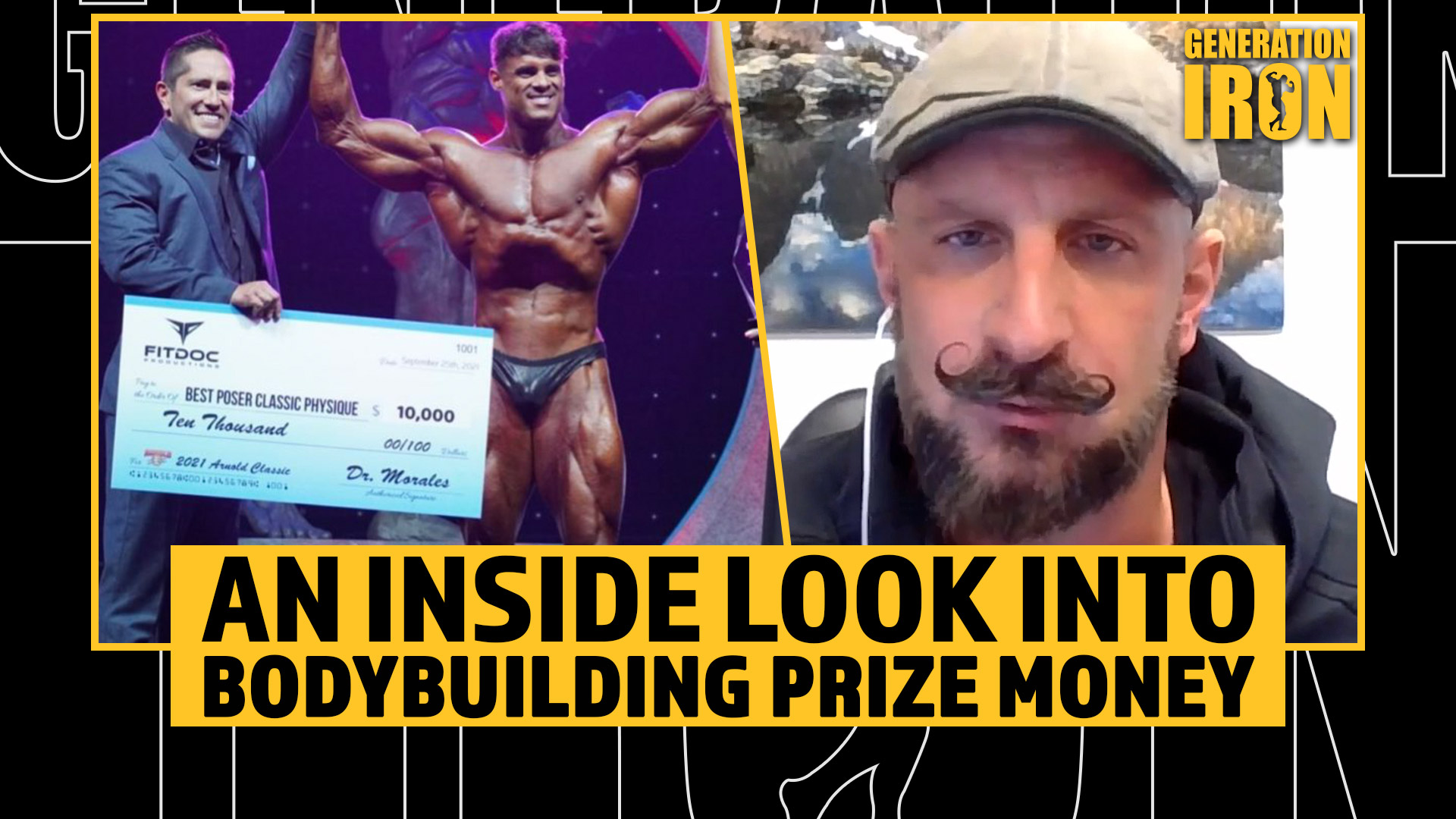
Bodybuilding Promoter Chris Minnes: How Prize Money Is Determined… And How It Can Be Raised
[embedded content]
Bodybuilding promoter Chris Minnes goes into transparent detail about how bodybuilding prize money is determined and ways in which the sport can raise higher payouts.
Bodybuilding competitions, the athletes who compete in them, and the fans who attend them are the lifeblood of the growing sport. But many believe that the sport will hit a plateau in growth and popularity if the prize money cannot be raised to higher amounts. While passion is an important factor for athletes who compete in bodybuilding – prize money is what allows these competitors to become career athletes. So what can be done to increase total prize money and help further grow the sport? In our latest GI Exclusive, bodybuilding promoter Chris Minnes explains how prize money works and what can be done to increase it.
Prize money for big events such as the Mr. Olympia and Arnold Classic often catch a lot of attention due to their big payouts. However, only one bodybuilder can earn first place, and the big cash prize, per year. Beyond these two pinnacle shows, the remaining pro shows offer relatively much lower amounts. Unlike other team pro sports like Football, Baseball, or Basketball – bodybuilders do not get paid simply for being pros and competing. They have to win.
This causes most pro bodybuilders to find other sources of income – as prize money alone cannot support their careers. While there is a successful infrastructure of entrepreneurial spirit and sponsorships – some believe that the sport needs bigger cash prizes in order to further grow into the next step. This, of course, is easier said than done. That’s why we turned to Chris Minnes, a successful bodybuilding promoter, to help explain the prize money process.
Everything you need to know about bodybuilding prize money
Chris Minnes starst off by explaining the NPC and IFBB Pro leagues have a minimum required cash purse. Most starting NPC and Pro shows will start at this minimum amount as they attempt to build more attention in order to grow the competition in the future. Running a bodybuilding competition comes with costs beyond running the event including registration fees to the league in order to legally put on the show.
So how do bodybuilding shows get past the prize money minimum while also still making a profit? Chris Minnes explains the next go-to decision is to bring in sponsors to help allow for higher cash prizes. But as Minnes further explains – even high level sponsorships cannot cover the cost of a big bodybuilding prize similar to what you’d see at the Mr. Olympia. So if sponsorships aren’t enough – what can be done?
Luckily the rise of the internet has allowed for much more direct advertising of a bodybuilding show. And most recently, PPV live streaming is finally getting a foothold on competitive bodybuilding – with even mid-tier shows being able to somewhat easily set up a stream. This opens up the possible ticket sales astronomically in theory. No longer is a local NPC or IFBB Pro show limited by it’s location. It can be seen across the world.
Yet the technological ability is only one part of the equation. Promoters still need to get people interested in large enough droves to bring in bigger revenue for bigger prize money. With so many competitions each year – getting to stand out for a more local show can be challenging.
This, Chris Minnes argues, is where the power of the athletes is vastly important. Minnes believes that athletes need to promote the events they compete in far more and far earlier to help drive sales. This just isn’t a plea for free advertising to make Minnes more money. It’s to make the competition earn more money so he can then raise the quality of the show and raise the prize money. Minnes believes that athletes, with their own online followings, can help directly improve their own profits by helping to promote shows.
Lastly, Chris Minnes also talks about how piracy is becoming an increased problem in the era of live streaming PPV events. Bodybuilding promoters do not have the massive network on the same level as a UFC PPV event – so it cannot obtain the same kind of security to stop illegal free streams. Minnes claims that he has seen pirated streams of his shows garner tens of thousands of views. In his mind – that’s the fans directly stealing prize money from the athletes.
There are a lot of hurdles to overcome – and many can perhaps be consider growing pains as the sport evolves alongside new technological options. You can watch Chris Minnes talk about it in full and refreshing transparent detail in our latest GI Exclusive interview segment above.
